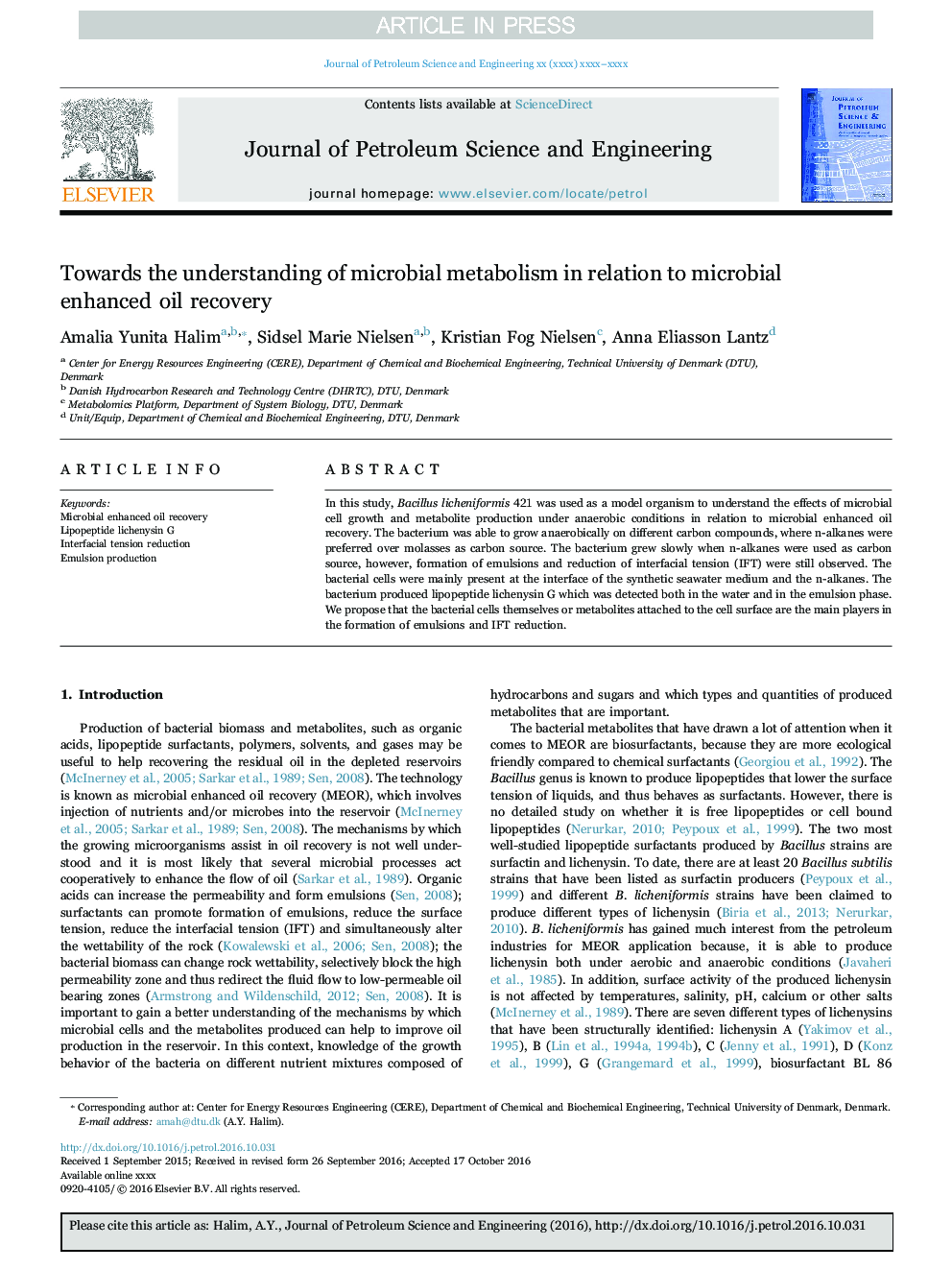| Article ID | Journal | Published Year | Pages | File Type |
|---|---|---|---|---|
| 5484459 | Journal of Petroleum Science and Engineering | 2017 | 10 Pages |
Abstract
In this study, Bacillus licheniformis 421 was used as a model organism to understand the effects of microbial cell growth and metabolite production under anaerobic conditions in relation to microbial enhanced oil recovery. The bacterium was able to grow anaerobically on different carbon compounds, where n-alkanes were preferred over molasses as carbon source. The bacterium grew slowly when n-alkanes were used as carbon source, however, formation of emulsion and reduction of interfacial tension (IFT) were still observed. The bacterial cells were mainly present at the interface of the synthetic seawater medium and the n-alkanes. The bacterium produced lipopeptide lichenysin G which was detected both in the water and in the emulsion phase. We propose that the bacterial cells themselves or metabolites attached to the cell surface are the main players in the formation of emulsions and IFT reduction.
Related Topics
Physical Sciences and Engineering
Earth and Planetary Sciences
Economic Geology
Authors
Amalia Yunita Halim, Sidsel Marie Nielsen, Kristian Fog Nielsen, Anna Eliasson Lantz,
